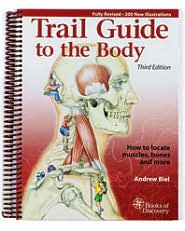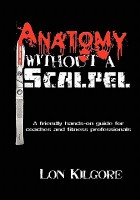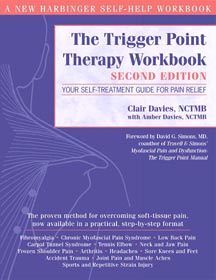Quality conditioning is beneficial to all trainees and necessary for some. “Conditioning” itself is a vague term; any adaptation is a conditioning to a stress, but we use it to imply an adaptation to “work capacity” and is therefore a sub-set of “endurance”. The act of ,and adaptation to, conditioning can aid in recovery as well as express the application of all physical ability. In other words, light conditioning can help the system recover and being “more conditioned” can facilitate shorter rest times between sets and more energy for a training session. Conditioning also expresses strength, power, speed, mobility, etc. in sustained activities whether they are a strongman medley, working construction, or being in a fire fight.
However, the key is on quality conditioning.
We can think about this in two ways: 1) the quality of the conditioning programming and 2) the quality of the movements while conditioning. I’ve written about both of these topics for at least four years, but let’s expand on them.
Quality Conditioning in a Program
It leaves the scope of this post to try to make a comprehensive review of how to program, but the basis for any program is strength acquisition. Strength is a fundamental capacity that facilitates the development and application of other physical attributes, including conditioning. Several years ago I wrote about how CrossFit programs needed to sprinkle in conditioning with a barbell strength program — the same thing that strength and conditioning coaches have been doing for over 50 years. The article was rejected from the CrossFit Journal on bounds that it didn’t contain “observable, repeatable data” (it did), so instead I made a very basic article that turned into the “Strength and Conditioning Program“. Not only have thousands of people used this and accumulated success, but CrossFit Football launched with a similar style of program and has had the same results — strength programs with conditioning yield better athletes than programs with a high frequency of conditioning. Everyone learned this on their own over the last four or five years.
But let’s get back to why and how to program it with quality. A quote from my pdf:
Metabolic conditioning is a collection of movements and activities that are organized to A) produce and maintain a high metabolic output relative to the amount of time it is performed and B) minimize any necessary recovery, if any, between those bouts of high output. Subsequently the body mobilizes and distributes resources more efficiently and effectively – an adaptation that is gained and lost quickly. Even though metabolic conditioning is an important aspect of performance, it must be understood that its expression is strength-dependent. As strength improves, the effort to maintain an output becomes a smaller fraction of absolute strength, and/or there is a reduction in effort to maintain a higher output. Therefore, recovering for strength training maintains precedence over conditioning in this program.
The strength training must maintain priority in a training program. The only exception I can think of is if an athlete or applied fitness trainee (a term we use in FIT to represent fire fighters, LEO, military, etc. — people who require a given fitness level for their job or life) who is peaking for a specific event (like a deployment). In that case, their final phase before the event will consist of ‘sport specific’ activity as it weens off of traditional strength training. But, again, this depends on the individual and the circumstances.
What’s important is the presence of the strength training. The act of actually lifting is just as important as the adaptation to being strong. The fact that a trainee loads their entire body and takes it through a full range of motion to have all of their muscles working together is necessary. It not only maintains strength or lean body mass, but it keeps the muscles, tendons, bones, ligaments, and nerves adapted to the activity. It also provides a systemic stress and subsequent adaptation that will keep the body adapted to work. And obviously the result of being strong will make someone more capable — nobody denies that.
If we accept the above, then we know the presence and recovery from strength training needs to maintain priority in a training program. This starts with the placement of training days and what occurs on those training days. In the S&C program, there are four, maybe five training days with two to four of them consisting of lifting. Yet the actual lifts done on those days will vary so that the same movements or muscle groupings aren’t repeated on consecutive training days.
When the strength training is programmed, the conditioning must be sprinkled in intelligently. It shouldn’t specifically go on rest days, because then those days are no longer rest days. The type of high intensity conditioning can vary — in FIT I define six different types of endurance training with five of them in the high intensity realm. How they should be implemented is explained in immense detail in FIT, but they shouldn’t be erratic or random. Conditioning workouts should compliment the strength training by not abusing the same musculature in the same day, by fatiguing muscular for a future session int he week, and the type of the conditioning should depend on the volume and intensity of the strength training itself.
If these factors are accounted for, a trainee will get stronger and either maintain or improve his conditioning. This is paramount to applied fitness trainees like soldiers who cannot avoid conditioning for the sake of barbell training; at the very least they need to maintain a structural adaptation to their job. The same goes for athletes; it wouldn’t behoove an American football player to show up to pre-season training camp de-conditioned — at worst he’ll be extremely sore, fatigued, and injury prone and at best hurt his chances of achieving a starting position.
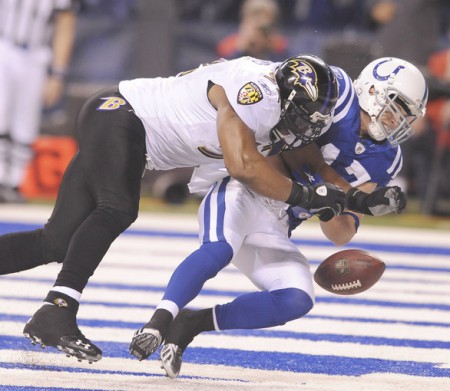
Ray Lewis conditions throughout every off-season and is in his 17th year in the NFL with 13 Pro Bowls and over 2,000 tackles.
There are a few instances where conditioning can be ignored, but most of the time it’s inclusion will only benefit the trainee, provided it is programmed and performed with quality.
Quality of Movement When Conditioning
Too often we cringe while watching videos of people performing exercises under extreme fatigue, yet this is an acceptable norm in the realm of conditioning. There are several reasons that higher technique standards should be used while conditioning It’s actually quite amazing that there aren’t more injuries, yet the weight is relatively light and injuries do develop with chronically poor mechanics. This is one reason “mobility” has been such a hot thing — not only will normal athletes need maintenance, but trainees who perform thousands of reps with crappy mechanics will eventually need repair.
Injuries are certainly debilitating to training, but what’s more important is using efficient mechanics to move a load. Poor technique does not distribute the force application throughout the necessary muscles and instead focuses it on a single or group of muscles that did not evolve to handle the effort. For example, it’s not uncommon to see a lack of hamstring involvement in CrossFit to result in an over development of the quads and under development of the posterior chain. Not only will the musculature itself be trained poorly or incorrectly, but the trainee is not performing as well as the could have.
If a trainee has adapted to conditioning with proper mechanics — and proper force distribution across the muscles — then they will be using the maximum number of muscles in a given movement, therefore applying more force and improving the economy of effort. They will either use less energy or become more resistant to fatigue since one specific muscle group is not bearing the bulk of the load and fatiguing quickly.
In other words, proper mechanics will yield better performance — in addition to decreased injury and better muscular development.
Note that using proper technique for the first time may result in slower conditioning times. This would be a result of the “muscles not being developed correctly” thing and will improve with consistent, quality technique and better strength training.
When I have to coach conditioning workouts (it’s not exactly fun), I coach two things: movement mechanics and overall economy of effort. The movement mechanics are the same, if not a more simplified, version of coaching the barbell lifts. “Knees out”; “chest up”; or “elbows up and in”. The difference is that I do not allow trainees to do it incorrectly. It’s the coach’s job to yield a quality training session for quality results. I’ve stopped the workout before to emphasize a point. I’ve lowered the weight (much to the trainee’s chagrin). I’ve made them stop moving or put the bar down for a short rest. Whatever I do, it’s to get them to move with efficiency.
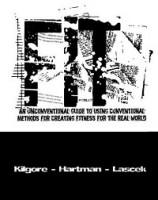 Coaching “economy of effort” is easy, but surprisingly poorly done. During breaks I coach people to take a certain amount of breaths — between one and five breaths. They will do this at logical pauses in their sets. If they need to do a set of ten, they’ll stop at 5. If they are doing a set of 15, they’ll stop at 8. If the weight is simply too heavy to be performed, then we know I didn’t program the workout because if the weight is too heavy it’s not a conditioning workout. There are guidelines in FIT for that too.
Coaching “economy of effort” is easy, but surprisingly poorly done. During breaks I coach people to take a certain amount of breaths — between one and five breaths. They will do this at logical pauses in their sets. If they need to do a set of ten, they’ll stop at 5. If they are doing a set of 15, they’ll stop at 8. If the weight is simply too heavy to be performed, then we know I didn’t program the workout because if the weight is too heavy it’s not a conditioning workout. There are guidelines in FIT for that too.
Whether a coach or trainee, quality technique in the actual conditioning workout is the difference between a spaz session where everyone gets sweaty and an effective, muscle developing conditioning session that will improve performance in the future.
Summary
Conditioning is both loved and hated in the training community. The truth is that it’s a quality addition to most programs, but only if it’s done right. To do it right, it needs to be programmed and executed intelligently. If the time is taken in order to actually do it, then we should optimize our effort with the best results possible. Results start with good programming and end with quality execution.


